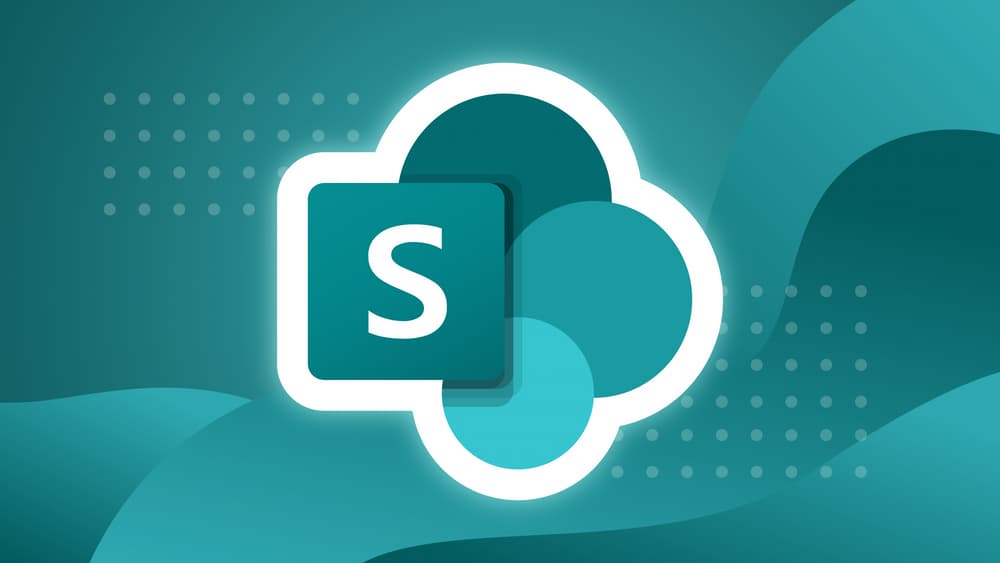SharePoint Server is a powerful platform created to support effective document management within businesses.
Businesses are able to simplify their operations, increase productivity, and assure compliance by using it as a central repository for storing, organizing, and collaborating on information.
Organizations may enhance their document management procedures and realize the full potential of their information assets by utilizing the robust capabilities and functions of SharePoint Server.
Organizations must evaluate their unique needs and goals before deploying document management on SharePoint Server. This entails determining the organization’s document management goals and objectives.
Additionally, examining current document management procedures and trouble spots reveals areas that need to be improved. The features of SharePoint Server may be better matched with the organization’s document management requirements by gathering requests from stakeholders and end users.
The number, kinds, and metadata needs of the current documents are thoroughly understood by doing a full inventory of the material, which guides decisions on how to organize and categorize the documents in SharePoint Server.

Defining Document Management Policies and Procedures
Clear rules and processes must be established in order to guarantee uniformity, compliance, and effective document management. This involves establishing governance guidelines for the development, management, and preservation of documents.
Organizations can expedite document classification and enhance searchability by defining document name conventions and metadata requirements.
Setting up security and access control procedures is crucial for safeguarding sensitive data.
Depending on the level of secrecy of the documents, SharePoint Server provides a variety of security tools including permissions, access restrictions, and encryption to protect them.
Maintaining document integrity and fostering user participation are made easier by documenting version control and change management processes.
Planning Document Taxonomy and Information Architecture
Successful document management in SharePoint Server depends on structuring content and documents in a logical manner.
Designing a system that mirrors the organization’s structure, operations, and business needs is part of the planning the document taxonomy and information architecture process.
A well-constructed document taxonomy offers a hierarchical framework that groups documents into useful categories and subcategories. It makes it simple for users to explore the libraries, folders, and sites of SharePoint Server, supporting effective document discovery.
Implementing metadata and content categories also enables additional categorisation and enhances searchability. Documents may be tagged with pertinent information by specifying the necessary metadata characteristics and content types, allowing users to filter and locate certain documents based on a variety of criteria.
By adding search features, SharePoint Server’s search capabilities are improved, enabling users to find documents quickly using metadata, content, or keywords.
Uploading and Organizing Documents in SharePoint Server
The process of uploading and organizing documents within SharePoint document management best practices by EPC follows the establishment of the document management structure. In order to create a consolidated and easily accessible repository, existing documents must be moved into SharePoint libraries and folders.
There are several ways to upload documents using SharePoint Server, including drag-and-drop, bulk upload, and application integration. Based on the amount and structure of the current papers, administrators can select the best strategy. Administrators may categorize and tag documents using metadata, enabling effective document classification and retrieval.
Documents are readily navigable and available to authorized users when they are organized inside libraries and folders in accordance with the predetermined structure. Additionally, SharePoint Server offers check-in/check-out and versioning features for documents, enabling many users to work together on documents while keeping a version history and avoiding incompatible modifications.
The document repository may be kept current and structured by putting into practice document lifecycle management strategies, such as archiving and deleting documents in accordance with retention guidelines.
The availability of pertinent and updated materials is ensured by routinely examining and deleting old papers to minimize information clutter.
Configuring Security and Access Control
Assuring the security and access control of sensitive information is an essential component of document management. Granular access restrictions may be established by companies thanks to SharePoint Server’s strong security capabilities.
User roles and permissions should be established by administrators based on job duties and document access needs. In order to ensure that users have the proper access rights depending on their responsibilities, SharePoint Server provides the assignment of permissions at the library, folder, and document levels.
Organizations should create external sharing rules to regulate collaboration with external users in addition to user roles and permissions. Administrators may specify precise sharing rights, limit sharing to select domains and enforce document expiration dates using SharePoint Server. By doing so, the business may verify that external cooperation is under control and in compliance with its security and data protection regulations.
Data loss prevention procedures should be put in place to protect sensitive data. Information rights management and data encryption are two capabilities that SharePoint Server provides to safeguard documents from unwanted access or disclosure.
To reduce the risk of data breaches, organizations should create data loss prevention policies, instruct users on best practices, and enforce compliance.
Enabling Collaboration and Document Sharing
Document management must emphasize collaboration, and SharePoint Server has potent tools that make collaborative and smooth document sharing possible. Organizations may establish designated venues where teams can communicate on documents and projects by setting up collaborative workspaces and team sites.
With the help of SharePoint Server, numerous users may collaborate on the same document at once. The process of reviewing and approving documents is streamlined by this real-time cooperation, which also increases productivity.
Users may participate in conversations, offer input, and remain informed about document changes thanks to capabilities for document sharing and collaboration like comments and alerts.
Organizations may establish a unified workflow experience and increase productivity by connecting SharePoint Server with additional collaboration platforms like Microsoft Teams.
Implementing Document Retention and Compliance
For firms in a variety of industries, adherence to legal and regulatory obligations is crucial. SharePoint Server has tools and features that can help with compliance management and document preservation. Based on internal needs and laws particular to the business, organizations should create document preservation policies.
These policies specify how long papers must be kept and when they must be disposed of. Organizations may automate the process of keeping and removing documents by defining retention schedules inside SharePoint Server, which eases the strain of manual administration.
Ensuring compliance with document management rules and regulations through routine audits and compliance checks. Organizations may maintain a comprehensive document management system by analysing document repositories, confirming compliance, and addressing any non-compliance concerns.
To have a well-organized document repository, papers must be archived and disposed of properly. Documents that need to be kept for long-term preservation may be quickly accessed when needed thanks to SharePoint Server’s archiving functionality. Establishing disposal processes can help keep data clutter to a minimum and compliance while safely removing documents that have outlived their usefulness.
Final thoughts
In conclusion, SharePoint Server provides a strong framework for effective document management planning. Organizations may build a strong foundation for their document management projects by adhering to the essential principles mentioned in this article.
SharePoint Server enables businesses to improve productivity, optimize document management procedures, and efficiently utilize their information assets by analyzing needs, creating rules, setting security, enabling collaboration, and assuring compliance.
Organizations may unleash the potential of effective document management and promote innovation in their processes by implementing SharePoint Server.


